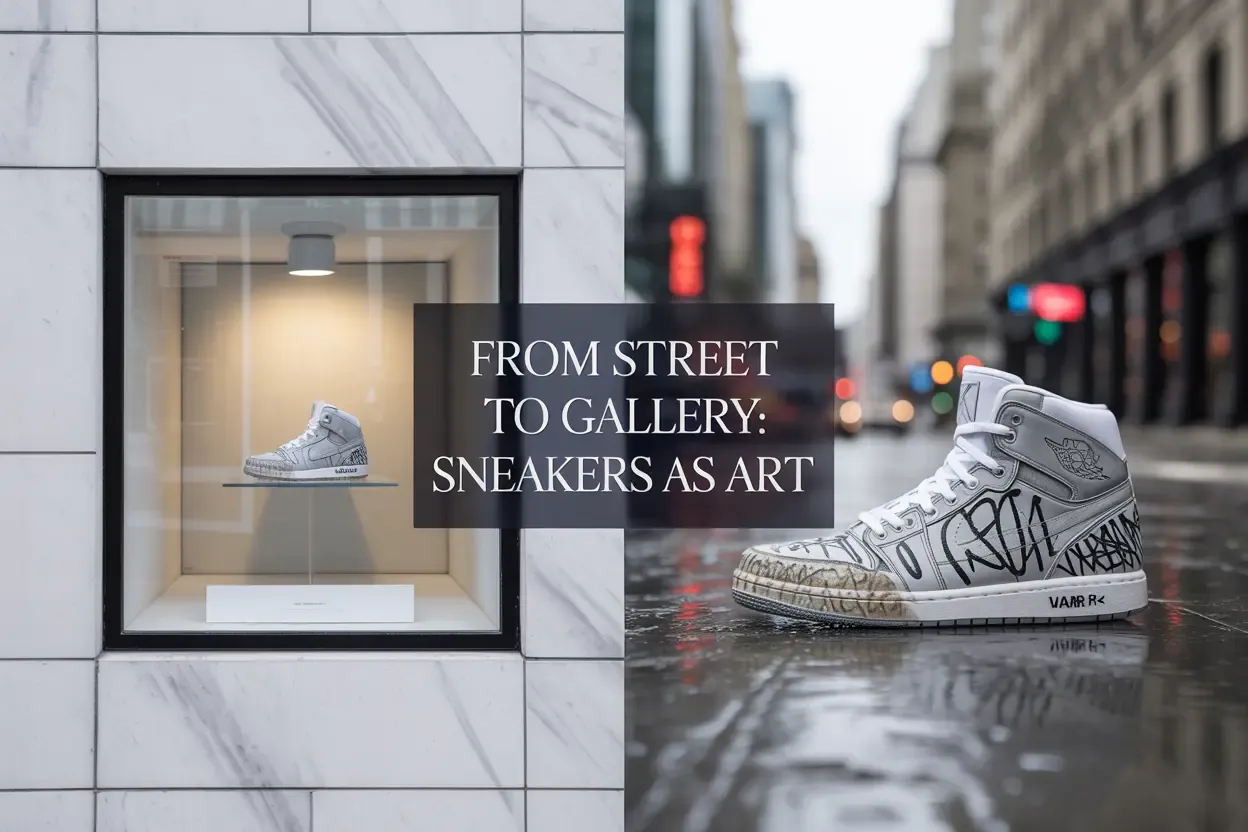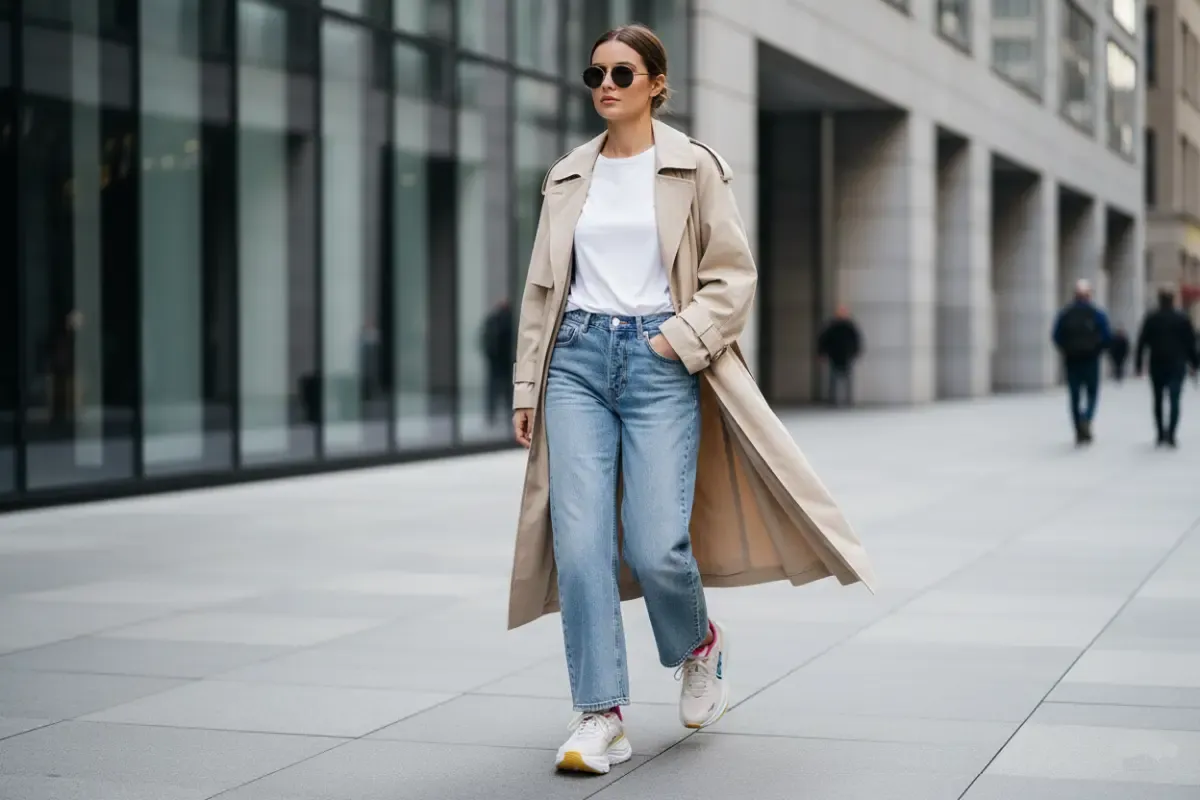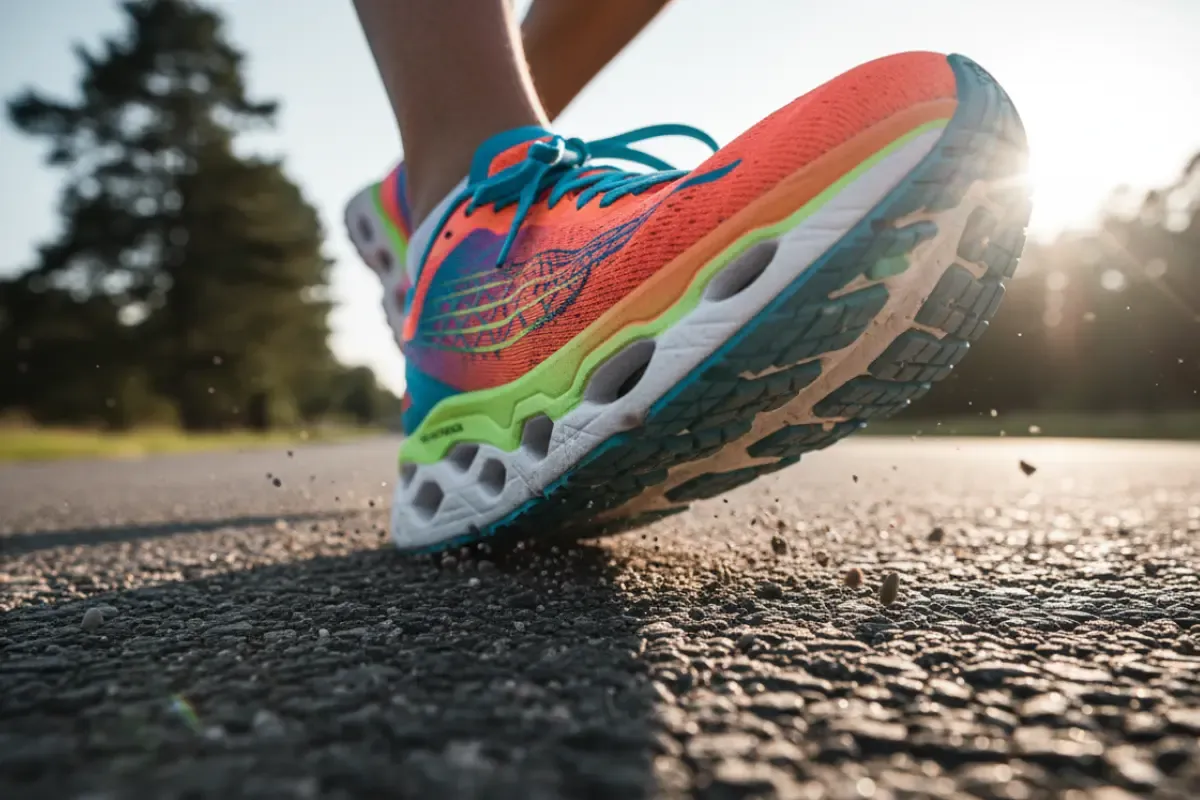
Table of Contents
Remember when sneakers were just... well, sneakers? Things you wore to play sports or maybe mow the lawn? Fast forward a bit, and suddenly, these humble kicks are trading scuff marks for glass cases, popping up in museums around the globe. It’s kind of wild, isn't it? This isn't just a fashion trend; it's a whole cultural moment, a real shift that's seen sneakers elevated from everyday footwear to bona fide artifacts worthy of serious curatorial attention.
Over the last decade or so, roughly from 2010 through 2024, we've seen a noticeable uptick in museum exhibitions solely dedicated to sneaker culture. This isn't an accident. It reflects something bigger happening – museums are becoming more accessible, recognizing the historical weight of popular culture, and frankly, the very definition of what counts as 'art' or significant design is getting a much-needed update in the 21st century. It’s fascinating to see how these shows explore the sneaker's journey, not just as an object, but as a symbol tangled up with identity, innovation, and even economics.
Kicks on Display: A World Tour of Sneaker Showcases
Museums everywhere have been catching on to this, each putting their own spin on the sneaker story. It's been a truly global phenomenon.
North America Led the Way with Big, Bold Shows

You could argue North America really kicked things off on a large scale. Places like the Bata Shoe Museum in Toronto have been instrumental. Their exhibition, "Out of the Box: The Rise of Sneaker Culture," which first showed back in 2013, was kind of foundational. It wasn't just a bunch of cool shoes; it was a proper historical deep dive, tracing the sneaker's evolution over 150 years, from those early canvas shoes to the cultural icons we know today. Curated by the brilliant Elizabeth Semmelhack, it featured everything from classic Converse Chuck Taylors (a favorite of punk anti-sneakerheads) to the full Air Jordan series, even sketches from legendary Nike designers like Tinker Hatfield. And you know what? It wasn't confined to one spot. This show toured everywhere thanks to the American Federation of Arts, hitting major cities like Brooklyn, Atlanta, and Oakland. It clearly struck a chord, bringing in diverse crowds, including lots of families and women, which is great for museums looking to broaden their appeal.
Then there's the whole Virgil Abloh phenomenon. While his "Figures of Speech" exhibition was a broader look at his multidisciplinary genius, his sneaker collaborations with Nike, especially "The Ten" project, were a huge part of it. Seeing those Off-White x Nike prototypes in a museum setting, like the "AN ARRAY OF AIR" installation, offered a peek behind the curtain at his creative process. These shows were massive hits, pulling in huge numbers, sometimes even doubling a museum's usual attendance and drawing in a noticeably younger, more diverse crowd. It just goes to show the power of cultural relevance in attracting visitors.
More recently, Semmelhack and the Bata Shoe Museum, in partnership with the AFA again, launched "Future Now: Virtual Sneakers to Cutting-Edge Kicks." This one is super cool because it looks at where footwear is headed – we're talking 3D-printed shoes, sustainable materials like mushroom leather, and even sneakers designed for the metaverse. It builds on that historical foundation but brings it right up to the bleeding edge, prompting you to think about what our shoes say about our future. And looking ahead, there's "Art/Wear: Sneakers x Artists," which is set to explore how artist collaborations are seriously blurring the lines between kicks and canvases. It's going to ask that big question: "What is art?" in a really tangible, wearable way.
The touring model has been key here, right? It allows these specialized, high-quality exhibitions to reach people in different regions who might not otherwise get to see them, making sneaker culture knowledge way more accessible. It’s a smart way to share the story.
Europe Wrapped Sneakers in Design and Culture

Across the pond, European museums have also wholeheartedly embraced sneakers, often placing them within larger conversations about design, fashion, and social history. The Design Museum in London, for example, had "Sneakers Unboxed: Studio to Street." This exhibition, curated by Ligaya Salazar, really dug into the design process, the impact on subcultures, and even the crazy resale market. They had everything from classic performance shoes to high-fashion takes by brands like Balenciaga. They weren't afraid to tackle current issues either, like sustainability in the industry. What's neat is that they even incorporated interactive elements, like an augmented reality experience where you could virtually try on a sneaker. Despite pandemic challenges, this show was a huge success, breaking attendance records for its gallery space.
Over in Paris, the Musée de l'Homme's exhibition "Sneakers, les baskets entrent au Musée" traced the history from the beginning, highlighting innovations like the use of rubber. It looked at their role in counter-culture and as fashion statements. It’s interesting how European museums often frame sneakers within these broader historical and design contexts, treating them as significant objects of mass consumption with roles in social change.
Even places with deep shoe history, like the Northampton Museum and Art Gallery in the UK (which, fun fact, has one of the world's largest shoe collections!), have hosted exhibitions like "From Sport to Street," tracing the history of the training shoe from really early examples all the way to modern icons. These shows really show how deeply sneakers are woven into the fabric of fashion and social history.
Asia-Pacific: A Growing Stage for Global and Local Flavor
The Asia-Pacific region has increasingly become a major stop for these big international sneaker tours. But they're also adding their own local flavor, which is pretty cool. "Sneakertopia: Step Into Street Culture" at the ArtScience Museum in Singapore is a great example. It was the Asian premiere of this show and featured over 100 limited-edition sneakers alongside murals and installations by local artists. It celebrated the crossover of sneakers into art, entertainment, and technology through these immersive zones. They even had Singaporean popstars (similar to the influence seen in K-Pop sneaker culture) lending pieces! This effort to include local creatives and narratives is a smart move; it makes the global phenomenon feel personal and relevant to the regional audience.
When "Out of the Box" toured to the Art Gallery of Western Australia, they ran a #mysneakerstory campaign on Instagram, asking locals to share their personal sneaker tales. It’s this kind of interactive, community-focused approach that really connects people to the exhibition content. And the touring "Sneakers Unboxed" exhibition at HOTA Gallery in Australia specifically included sneakers from the archives of the Australian publication Sneaker Freaker, highlighting local contributions to the culture. It's clear that while the shows might be international, the best ones find ways to resonate locally.
Now, putting together a truly global picture is tricky. So much of the documentation is in English, for one thing. And you have to be careful to distinguish between a proper museum exhibition and, say, a sneaker convention or a pop-up shop, which are totally different beasts, though related. But even with those challenges, the trend is undeniable: sneakers are everywhere in the museum world.
More Than Just Looking: What Happens When Kicks Go on Display?

These exhibitions aren't just static displays. They do things. They attract people, start conversations, and even make you look at a simple shoe differently.
Counting the Footfall (Pun Intended!)
One clear impact is on visitor numbers and demographics. The "Virgil Abloh" show at MCA Chicago was a prime example – it brought in a flood of young people, many of whom might not have been regular museum visitors. Same with "Sneakers Unboxed" in London, which broke attendance records. Exhibitions focused on popular culture, especially those tied to figures or movements with diverse appeal, are clearly effective at bringing new faces through the doors. It suggests that museums are becoming more relevant to a broader slice of the population, which is a fantastic thing. While getting consistent, comparable visitor data across all exhibitions is tough, the snapshots we do have point to significant engagement.
The Digital Echo: Hype Beyond the Hallways
In our always-connected world, an exhibition's life doesn't end when you leave the building. Social media is huge. Museums use specific hashtags, run campaigns inviting people to share their stories, and even create augmented reality experiences. The Design Museum's "Sneaker 0" AR filter is a great illustration of how technology can extend the exhibition and engage with audiences on platforms they use every day. Curators themselves have noted how effective social media is for getting the word out. For a culture so tied to online communities and trends, the digital footprint of these shows is a vital part of their impact.
Designing the Experience: Making Sneakers Shine
How you display a sneaker matters, right? You can't just put it on a pedestal and call it a day. Exhibition designers are getting really creative, aiming for immersive, dynamic spaces that capture the energy of sneaker culture. Think multimedia displays, themed zones, and interactive elements. The "Virgil Abloh" show, designed by Rem Koolhaas's firm OMA*AMO, was conceived as a whole environment. "Sneakertopia" had ten distinct immersive zones. Even a show about 1980s consumerism at the Bata Shoe Museum transformed its gallery into an 80s-inspired shopping mall to set the mood. These designs are meant to go beyond just showing objects; they're about creating an experience that resonates with the audience and the subject matter.
The Big Question: Are Sneakers Art Now?
This is the conversation that always comes up, isn't it? When you see a sneaker in a museum, curated and presented with the same care as a painting or sculpture, it inevitably makes you wonder about its status.
What Do the Curators Think?
The people putting these shows together definitely see sneakers as more than just shoes. Elizabeth Semmelhack, for instance, consistently talks about their complex social histories and profound cultural significance. She sees them as status symbols, as canvases for design, and as objects that reflect innovation and our connection to the future. Her upcoming "Art/Wear" show directly asks about the nature of art when it comes to artist-sneaker collaborations. She believes these partnerships challenge traditional boundaries and contribute to the ongoing discussion of what art even is today. She's even pointed out that sneakers offer a unique canvas for men to experiment with color and pattern, framing them as "investments" to make engaging with fashion feel more comfortable for some guys.
Ligaya Salazar, from the Design Museum, calls sneakers "one of the most ubiquitous designed objects" globally. She emphasizes their role in subcultures, their design evolution, and their "democratising" power as vehicles for identity, especially for young people from diverse backgrounds who've been pivotal in making certain sneakers iconic.
Other curators echo these ideas, viewing sneakers as expressions of personal identity, reflections of pop culture, and objects that carry memories and stories. There's a clear consensus within the museum world that sneakers are rich cultural texts, absolutely deserving of serious examination and public display.
How Did the Critics Respond?
Generally speaking, the critical reception has been pretty positive. Major publications review these shows, acknowledging the cultural significance and design ingenuity on display. "Sneakers Unboxed" got rave reviews, described as a "technicolour medley" that successfully explored themes from identity to ecological impact. The media attention for shows like "Virgil Abloh" from established art and culture outlets also signals that sneakers, as part of his work, are considered important subjects. Reviews often praise the exhibitions for telling the complex stories behind the shoes and moving beyond just seeing them as commercial products. While they might not always definitively label a sneaker "art," the act of reviewing them in this context certainly lends a degree of validation.
Where Academics Come In
It's not just museums and critics; scholars are also studying sneakers through the lenses of material culture and fashion theory. This academic work provides a theoretical backbone for why these objects belong in museums. Research looks at how trainers function as "body prosthetics," playing a role in how we express identity based on gender, class, and age. It highlights that despite their ubiquity, shoes have often been "materially invisible" in academic discussion, something museum exhibitions help to rectify by making them physically and conceptually visible. This connection between exhibitions and scholarly inquiry reinforces the cultural and intellectual legitimacy of sneaker studies.
The Sneakerverse and the Museum Bump: What About the Market?
Okay, let's talk about the elephant in the room (or maybe the rare Air Jordan). These museum exhibitions are happening at the same time the sneaker resale market has absolutely exploded. We're talking a multi-billion dollar ecosystem where some shoes fetch insane prices.
The Resale Game
The secondary market is huge, fueled by limited releases, collaborations with celebrities and artists (sometimes even anime-inspired), and the constant buzz on social media. Companies like StockX and GOAT are major players. Rarity, exclusivity, and the "hype" around a release are what drive values way, way above retail price. Sneakers, unlike most clothes, can actually be serious investments.
Does Being in a Museum Jack Up the Price?
This is a tricky one to definitively prove with a simple cause-and-effect. Museums often feature sneakers that are already super rare, culturally significant (perhaps even iconic from cinema), and expensive on the resale market. So, did the museum make them valuable, or were they valuable already, which is why the museum chose them? Probably a bit of both.
However, having a sneaker displayed in a major museum does give it a certain kind of institutional validation. It solidifies its status as a legitimate cultural artifact, which can absolutely increase its desirability and perceived long-term collectibility. It might not cause an immediate price spike (the market is influenced by so many things), but it definitely contributes to its cultural cachet. When you see a pair of Louis Vuitton x Kanye West Jaspers or rare Off-White x Nike prototypes in a museum, it reinforces their iconic status. Auction houses like Sotheby's are now treating sneakers as "a respected commodity, a piece of art," which wasn't always the case. The museum context implicitly backs up a sneaker's authenticity and historical importance, qualities that are highly valued in a market where fakes are a real concern.
So, while it's hard to put a number on the "museum effect" in terms of immediate price changes, the cultural endorsement from a museum likely sustains or even enhances a sneaker's value over time by exposing it to new audiences – including art collectors – who appreciate that kind of validation. Framing sneakers as "investments" within these contexts also plays into the market narrative.
Stepping into the Future: What's Next for Sneakers in Museums?
Looking back over the last decade and a half, it's clear that sneakers have firmly established their place in museum exhibitions and scholarly discussion worldwide. We've seen everything from broad historical surveys to deep dives into design, technology, and the intersection with art. These shows have proven they can attract diverse crowds and leverage digital tools to engage audiences in new ways. Curators are increasingly framing sneakers not just as objects of design or commerce, but as complex cultural artifacts loaded with social history and artistic potential.
The relationship with the resale market is a complex layer to this story. While museums validate the cultural importance of sneakers, that validation inevitably intersects with a market driven by hype and scarcity. This "art versus commodity" discussion is likely to continue as museums navigate the commercial realities tied to these cultural objects.
The narrative isn't static, though. Future exhibitions are already looking at things like sustainability, virtual footwear, and the deeper socio-economic implications of sneaker culture. It's moving beyond just showcasing cool shoes to really examining what they mean in a rapidly changing world.
Ultimately, museums aren't just passive observers of this shift; they're active participants. By choosing to exhibit sneakers, by deciding how to frame and interpret them, they're influencing public perception, contributing to the ongoing definition of these objects, and fostering important conversations about their place in contemporary culture. The journey of sneakers into the museum is a fascinating chapter in how we define art, culture, and value today.


